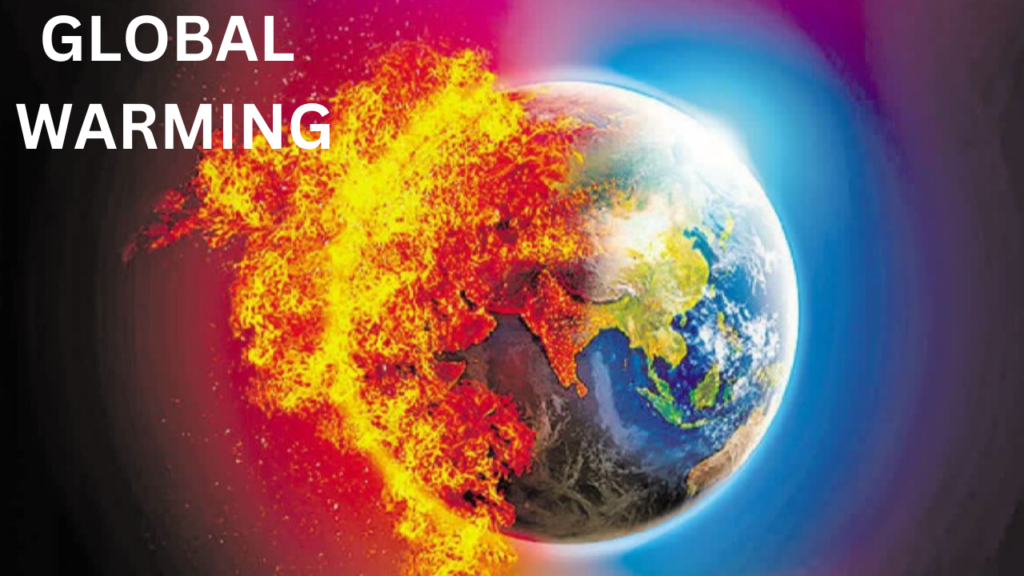
Climate change is one of the most critical challenges of the 21st century, transforming our world in unprecedented ways. It refers to long-term changes in weather patterns and temperatures, primarily driven by human activities such as industrial processes, deforestation, and the burning of fossil fuels. The evidence of global warming is undeniable, posing serious threats to ecosystems, economies, and societies worldwide.
What is Climate Change?
The greenhouse effect is the underlying mechanism driving climate change. Certain gases, such as carbon dioxide (CO₂), methane (CH₄), and nitrous oxide (N₂O), trap heat in the Earth’s atmosphere, maintaining temperatures suitable for life. However, since the Industrial Revolution, human activities have dramatically increased the concentration of these gases.
• Sources of Greenhouse Gases:
- Carbon Dioxide (CO₂): Released primarily through the burning of coal, oil, and natural gas.
- Methane (CH₄) and Nitrous Oxide (N₂O): Emitted from agricultural practices and waste management.
This excess accumulation of greenhouse gases thickens the “blanket” surrounding the planet, leading to global warming.
Visible Impacts of Climate Change
Climate change manifests in various ways, with significant impacts on the planet and human life:
1. Rising Temperatures
The Earth’s average surface temperature has increased by approximately 1.2°C since the late 19th century. Heatwaves are becoming more frequent and intense, threatening human health and straining energy systems.
2. Melting Ice and Rising Sea Levels
The rapid melting of glaciers and polar ice caps contributes to rising sea levels, increasing the risk of flooding in coastal areas and endangering critical infrastructure and millions of lives.
3. Extreme Weather Events
The frequency and intensity of hurricanes, storms, droughts, and wildfires have escalated, causing loss of life, displacement, and severe economic damage.
4. Biodiversity Loss
Changing climates disrupt ecosystems, putting numerous species at risk of extinction. Coral reefs, essential marine habitats, face severe threats due to ocean warming and acidification.
Human and Economic Costs
Impact on Vulnerable Communities
The effects of climate change disproportionately impact vulnerable populations, particularly in developing countries. Reduced agricultural productivity, water scarcity, and heat-related illnesses exacerbate poverty and inequality.
Economic Consequences
Failing to address climate change comes with immense economic costs. Research published in Nature Climate Change predicts that global GDP could decline by over 20% by 2100 if global temperatures rise beyond 2°C above pre-industrial levels.
Mitigation and Adaptation: The Path Forward
1. Mitigation
Mitigation focuses on reducing greenhouse gas emissions to slow global warming. Key strategies include:
- Transitioning to renewable energy sources such as solar, wind, and hydropower.
- Enhancing energy efficiency and promoting sustainable agricultural practices.
- Conserving and restoring forests, which act as carbon sinks.
2. Adaptation
Adaptation involves building resilience to the inevitable impacts of climate change. Measures include:
- Developing climate-resilient infrastructure.
- Implementing early warning systems for natural disasters.
- Improving water resource management to address scarcity.
International Initiatives and Agreements
Tackling climate change requires global cooperation. International frameworks like the Paris Agreement aim to limit global warming to well below 2°C, with a target of 1.5°C. Countries commit to reducing emissions through nationally determined contributions (NDCs), but stronger pledges and effective enforcement mechanisms are necessary to achieve these goals.
What Can Individuals Do?
Everyone can play a role in combating climate change by adopting sustainable practices:
- Use energy-efficient appliances and switch to renewable energy sources.
- Minimize waste by recycling, composting, and choosing sustainable products.
- Support reforestation programs and advocate for environmentally friendly policies.
- Spread awareness and educate others about the urgency of addressing climate change.
Conclusion
Climate change is not a distant threat but a pressing reality that demands immediate and coordinated action. While the challenges are significant, they also present opportunities for innovation and collaboration. By uniting efforts across communities, businesses, and governments, humanity can pave the way for a more sustainable and resilient future.
The time to act is now.
Global warming is the phenomenon of gradual increase in the average temperature of earth.
• Temperature rise
• Extreme weather
• Sea level rise.
• Health risks
• Ecosystem disruptionLoss of speciesPoverty and displacementIncreased mortality rates
• Spread of disease
